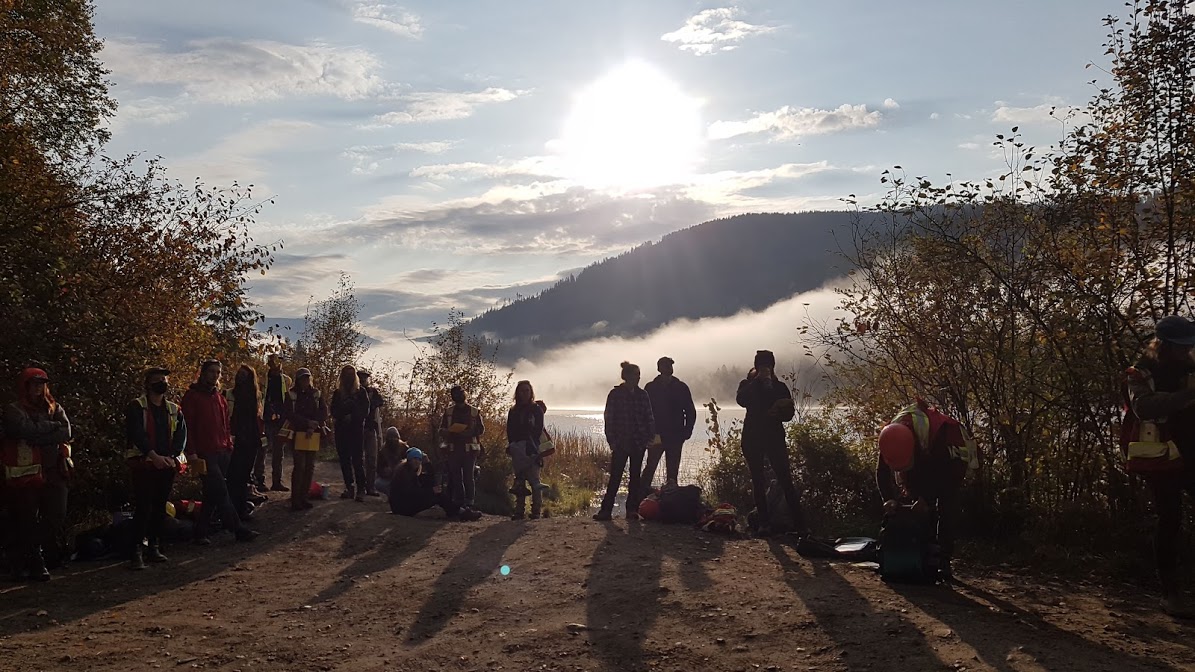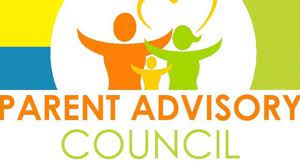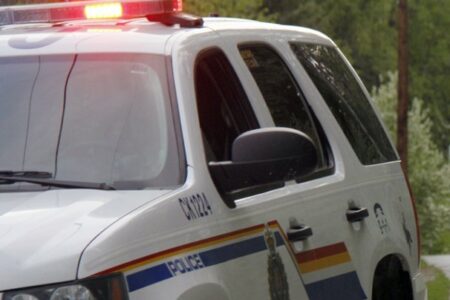CKISS turns to volunteers from Selkirk College to remove invasive plants from Erie Lake
On a sunny October morning students from Selkirk College’s Recreation Fish and Wildlife Program joined the Central Kootenay Invasive Species Society (CKISS) to remove invasive yellow flag iris from Erie Lake, a small waterbody outside of Salmo, BC.
Yellow Flag Iris is a “wet-footed” invasive plant that grows in ponds, ditches, wetlands and other riparian habitats. From May to July Yellow Flag Iris is easily recognizable, with a pale yellow flower that resembles a garden iris. The invasive plant was introduced through the horticulture industry when gardeners planted it into their water gardens. It has now “jumped the garden fence” and ended up in natural areas causing environmental harm.
CKISS has listed Yellow Flag Iris as a priority species because it is capable of invading new areas quickly, spreading by seeds and rhizome fragments. Once established it outcompetes native plant species and ultimately disrupt an area’s ecosystem. These disturbances result in reduced habitat suitability and support for wildlife – especially for breeding, staging, and migrating waterfowl. In addition, the plant can sicken livestock if ingested and can cause skin irritation in humans.
Small infestations of yellow flag iris can be controlled through hand digging, but caution must be exercised to ensure fragmentation does not occur. Fragmented rhizomes can produce new plants. With waders on and shovels in hand student volunteers were eager to jump into their canoes and tackle the invasive iris that has found it’s way into Erie Lake’s riparian zone.
The invasive plant debris was bagged and brought to a local landfill for proper disposal. Hand digging and dead heading will be required at the site over several years to ensure efficacy.
“It is important to protect wetlands like Erie Lake from the negative impacts of invasive plants. Healthy wetlands provide us numerous valuable services to us. They are a source of freshwater, they assist with flood control, they help combat climate change by storing greenhouse gases and wetlands offer countless recreation opportunities.” states CKISS Education program coordinator Laurie Frankcom.
The best tool we have to protect our waters is prevention! Since invasive species can hitchhike on boats, trailers, fishing gear, life jackets, and other boat related equipment it is vital that all boaters are following the Clean, Drain, Dry steps when travelling between different bodies of water, even within BC.
- CLEAN off all plants, animals, mud,
- DRAIN onto dry land any item that can hold water,
- DRY all items completely before launching the watercraft into another body of water.
Anyone interested in organizing a Community Weed Pull in your area please reached out to Laurie Frankcom, 1-844-352-1160 ext. 208 or info@ckiss.ca
Photo Caption: Selkirk College students begin to bag invasive plant debris prior to taking to local landfill for proper disposal. — Submitted
CKISS is a non-profit society that delivers education and awareness programs, and promotes coordinated management efforts of invasive species in the Regional District of Central Kootenay and Regional District of Kootenay Boundary Area A and B. CKISS acknowledges the support of its funders, including the Columbia Basin Trust, and Environment Canada’s Eco Action Community Funding Program.

























